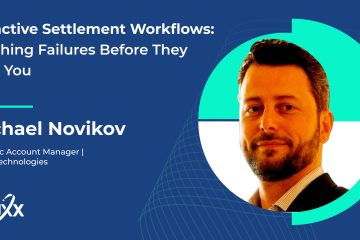
As the cryptocurrency market continues to evolve, the demand for fast and frictionless trading experiences that involve no middlemen is on the rise. And even though the crypto market is gaining significant ground among investor circles, knowledge of crypto markets and trading methods is still in the stages of infancy. Changes in the crypto market happen at impressive speeds, and in order to trade efficiently, investors need to be attuned to them.
Executing real-time crypto trading involves aggregating high volumes of data at lightning speed. This is where the importance of automation and algorithmic trading as an extension becomes a useful feature to explore. In this blog, we cover some of the common questions that are typical to algorithmic trading within the cryptocurrency trading space.
So, what exactly is algorithmic trading?
Algorithmic trading is the process of using computer-programmed commands to execute orders, in tandem with a pre-defined set of rules that are automatically assigned to trade orders such that they generate profits at high speed and high frequency. Algorithms are composed of these pre-defined sets of rules, they typically range from being holistic quantitative formulae to predictive analyses driven by intensive machine learning models. These algorithms can be used to execute trades by keeping a tab on prices, volume, and other news feeds for general analysis of the market.
In a nutshell, algorithmic trading is an automated system of market order execution that relies on pre-programmed trading commands or rules. Also known as high-frequency trading, algorithmic trading can make thousands of trades each second, sans human errors.
Why do we need crypto trading algorithms?
There are primarily three reasons that can be attributed to why we need to use predefined rules to trade.
1.To save time and get up to speed
Analyzing market data is a laborious task for traders, especially for novice traders. Spotting the right moment to carry out a trade is definitely not an easy job considering how dynamic the crypto trading ecosystem is. A trading algorithm can ease up the cumbersome process of having to sift through scores of data when identifying a trading opportunity and instead set up an algorithm to execute the trade.
2.To declutter and make sense of data
Given the copious amounts of information overload that traders are subjected to these days, the use of a pre-defined algorithm enables them to see data for what it’s worth and carry out trade with automated assistance. Multiple machine learning models are adept at gathering and learning from the latest data and inputs and can keep evolving with the changing market conditions in a dynamic manner.
3.To ease the steep learning curve
There is quite a bit of ambiguity associated with crypto trading when it comes to new traders. The onus of understanding how a crypto trading exchange works is also on the trader, and sometimes the learning process can be quite overwhelming as it does involve a fairly steep learning curve. In this case, a trading algorithm can be extremely useful as it can consume large volumes of data and thereby precludes the need for a trader to learn the entire exchange’s features by providing a hands-on learning experience to get into the system quite quickly, ultimately expediting the entire process of trading.
Here are some useful algorithmic trading strategies
Arbitrage
Buy at low rates in one market and sell at high rates in another market – this is what’s at the heart of the underlying principles of arbitrage. By capitalizing on market inefficiencies, crypto arbitrage takes advantage of price differences across different exchanges. The key to arbitraging lies in how rapidly it is carried out since market price differences don’t last too long. Despite associated risks such as slippage, as an algorithmic trading technique, crypto arbitraging is useful to spot minute opportunities and act on them.
Market making
Market making is the process of simultaneously quoting bid (offers to buy) and ask (offers to sell) prices for the same assets on an exchange. Market-making is typically suited for algorithmic trading because a market maker usually tends to capture the change in a spread by adjusting the price of multiple orders simultaneously. In the same context, scalping is another algorithmic trading technique that allows traders to take advantage of small price fluctuations and accumulate a huge volume of small profits, off these price variations. Scalping ensures that traders profit off the changes across the diverse trades on a bid-ask spread.
Order chasing
Just as the name suggests, crypto traders who ‘chase orders’ are keen market players on the lookout for block orders and step in to profit from them. Once a large order is placed, they swoop in swiftly with the assumption that the waves made will trigger volatility. To exploit this, tech-savvy traders make use of complex data scraping bots that dig up large order information.
Bitcoin and cryptocurrencies are gradually making their way into mainstream markets as more investors are beginning to explore this asset class. If you’re looking to smartly trade within the crypto space, be sure to get a good grasp of these algorithmic trading strategies. This helps increase market liquidity by introducing a large volume of trades and orders, and will definitely help to optimize your investment portfolio.


